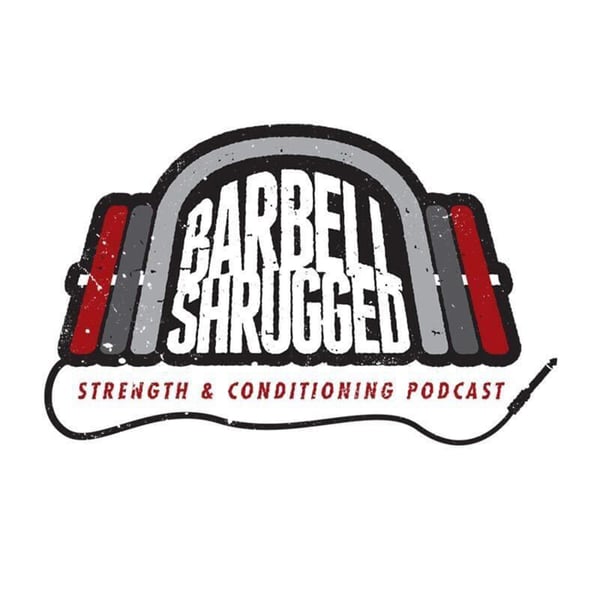Moving All Your Cells with Katy Bowman
Barbell Shrugged
Doug Larson
4.7 • 2.8K Ratings
🗓️ 12 July 2017
⏱️ 71 minutes
🧾️ Download transcript
Summary
“You need to cross-train your balls, is basically what I’m saying.” Biomechanist Katy Bowman gets straight to the point in this week’s podcast. We interviewed Katy at Paleo (f)x Austin, where she’s a featured speaker on the concept of movement -- not to be confused with what we often refer to as “exercise.”
“There are more muscles than you’re working in the gym, and those muscles will go on to affect your health,” says Katy.
We’re big fans of her book, Move Your DNA, which mentions the various casts we put on or around our bodies, from shoes to mattresses to underpants. So, in fairness to Katy, she didn’t lead with cross-training your balls. It was the first question we brought up.
Rather than focusing on the biomechanics of workouts, Katy’s expertise is in the total ecosystem of our movement. How we move, what we move, and when we move, during the full 24 hours of our day. Through this lens, she evaluates health on a cell-by-cell basis, rather than looking just at the muscles developed in the gym.
“The difference between [a person who works out] and a couch-potato is like 4% in terms of total movement. So we’re not moving well for health, because we’re teaching to the test. We’ve set up the variables that we think will correspond to better health… You end up getting people who are fit, but unwell, and they’re extremely confused.”
Unlike old-school fitness models where athletes are encouraged to basically be sedentary when they’re not working out, Katy emphasizes that the real thing our body trains around will be whatever we spend the most time doing (or not doing). Those of us who work office jobs are usually training our bodies to sit. Then maybe we hit the gym after work. Then we go home and train our bodies to sleep on a soft mattress. So we spend billions of dollars trying to perfect that one hour of exercise we get during the day.
Listen in as Katy graciously points out the way we’re screwing up our lives every day, and what tiny and iterative lifestyle changes will improve us in our cells and beyond.
Enjoy,
Mike
Transcript
Click on a timestamp to play from that location
| 0:00.0 | As someone who went from like an athlete and a full-time mover to a parent, a full-time parent, |
| 0:06.0 | it was like, there goes my whole definition of self as being a mover because it's like, I couldn't |
| 0:11.1 | step away for two hours or three hours of intense training like I like to do. And I didn't have |
| 0:16.4 | any other context for anything else. So then when I got this seven pound weight, I was like, |
| 0:20.2 | big deal, I could lift heavy, I can run a marathon, whatever. But I couldn't carry my seven pound |
| 0:25.6 | without taking a break after 60 minutes. And I was like, well, there's a definition of strength, |
| 0:29.7 | like I'm not even functional enough to carry this kid. And so then I became, it's like the training |
| 0:35.1 | program that doesn't end. Like I can't, when the song's over, I can't put the weight down. |
| 1:00.0 | Well, we're gonna barbell shrug a Mike Blitzer with Doug Larson. And we actually brought Alex |
| 1:15.3 | Macklin back. Alex is back. He's pretty cool. So we're here at PaleoFX in Austin, Texas. And we |
| 1:25.4 | are going to be interviewing Katie Bowman today, biomechanist. And your books are amazing. |
| 1:33.5 | Like your perspective on how stimulus impacts the body and just the whole systems approach that |
| 1:40.5 | you take is really, really impressive. I think people are going to get a lot out of this. I think |
| 1:47.2 | paradigm shifting would be for sure the phrase that would fit here. Definitely. |
| 1:51.3 | It seems most people in our fitness, recognition world, you think biomechanics, I think like the biomechanics |
| 1:57.1 | of snatching. What are the forces in joining us involved in doing one very, very, very specific |
| 2:01.1 | movement. But from what I've heard from the content that I've seen in your book and from |
| 2:06.6 | podcast, I'll listen to one perspective I really have enjoyed is how you see how loads affect |
| 2:11.8 | the body just in everyday life. A couple cool examples that I remember from your book where |
| 2:16.3 | you're talking about everyone's favorite examples like if you wear boxed briefs versus don't wear |
| 2:20.8 | boxed brief like how your balls hanging normal are my balls, maybe your balls. Like how that affects |
| 2:29.6 | the loads that are placed on them and that affects your physiology. Yeah. There's muscles there. |
... |
Please login to see the full transcript.
Disclaimer: The podcast and artwork embedded on this page are from Doug Larson, and are the property of its owner and not affiliated with or endorsed by Tapesearch.
Generated transcripts are the property of Doug Larson and are distributed freely under the Fair Use doctrine. Transcripts generated by Tapesearch are not guaranteed to be accurate.
Copyright © Tapesearch 2025.

